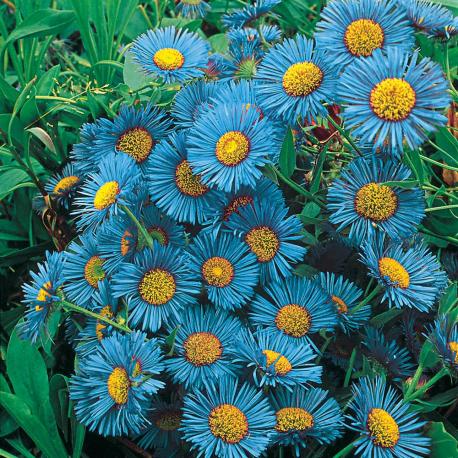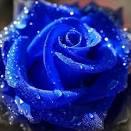Results: Rhapsody in Blue
Published on 09/20/2020
Blue is one of the rarest colors for flowers, appearing in less than 10% of the world’s species of blooming plants. Among those who specialize in color analysis, it is sometimes claimed that there have never been, nor will there ever be true blue flowers. This has to do with the fact that there is no blue pigment in the plant kingdom, and colors that appear to be blue are actually permutations of violet or purple.

QUESTIONS
GO to COMMENTS
Comments
1.
1.
Blue Poppies: For many years, people outside Asia believed that blue poppies were a myth. A handful of cerulean species are found on the hillsides of the Himalayas and surrounding areas, glowing against the pale rock and green meadows. They have translucent petals and slightly prickly stems; when stressed, they grow streaked with plum, becoming even more beautiful. They only grow in cool, moist, northern areas of Europe, the Pacific Northwest, parts of New England, and Alaska. The plants prefer well-drained soil with lots of organic matter and shelter from shade and wind. They also tend to die after their first flowering. There are several botanical gardens in the U.S. where you can see the poppies. They have also been spotted at Jardins de Métis (Reford Gardens) in Quebec, as well as the Butchart Gardens in Victoria, British Columbia. Have you seen this beautiful blue flower?

Yes
17%
367 votes
No
83%
1856 votes
2.
2.
Blue Fringed Daisies: One of the rarest blue flowers. They are named so because it looks like fringe surrounded by a yellow and green center. These daisies have delicate, fine blue-purple petals that produce lots of flowers in midsummer. Are you familiar with this daisy?

Yes
15%
325 votes
No
85%
1898 votes
3.
3.
Blue Rose: Researchers from Japanese & Australian companies named Suntory and Florigene respectively took 14 years to create the first Blue Rose. Thanks to a Japanese plant breeding project, a version of the most popular flower was finally developed that, as determined by England's Royal Horticultural Society, was officially blue. To qualify as authentically blue, a flower, when facing north, must meet certain blue standards as displayed on a highly nuanced color chart. Have you ever seen a blue rose?

Yes
16%
355 votes
No
84%
1868 votes
4.
4.
Blue Aster: In addition to blue, Asters also come in beautiful shades of red, purple, yellow, white, and pink, which is the last plant to bloom in a year. It is also known to have healing properties. In ancient times, people used to believe that burning aster flower leaves would drive away evil forces. Are you familiar with the blue aster?

Yes
26%
575 votes
No
74%
1648 votes
COMMENTS


